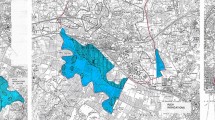Abstract
This paper examines the impact that insurance coupled with specific risk mitigation measures (RMMs) could have on reducing losses from hurricanes and earthquakes as well as improving the solvency position of insurers who provide coverage against these hazards. We first explore why relatively few individuals adopt cost-effective RMMs by reporting on the results of empirical studies and controlled laboratory studies. We then investigate the impact that an RMM has on both the expected losses and those from a worst case scenario in two model cities—Oakland (an earthquake-prone area) and Miami/Dade County (a hurricane-prone area) which were constructed respectively with the assistance of two modeling firms. The paper then explores three programs for forging a meaningful public-private sector partnership: well-enforced building codes, insurance premium reductions linked with long-term loans, and lower deductibles on insurance policies tied to mitigation. We conclude by briefly examining four issues for future research on linking mitigation with insurance.
Similar content being viewed by others
REFERENCE
P. May and N. Stark, ''Design Professions and Earthquake Policy'' Earthquake Spectra 8115–32 (1992).
Office of Technology Assessment, Reducing Earthquake Losses(USGPO, Washington, DC, 1995).
P. Kleindorfer and H. Kunreuther, ''Challenges Facing the Insurance Industry in Managing Catastrophic Risks'' in K. Froot (ed.), The Financing of Catastrophe Risk(University of Chicago Press, Chicago, 1999).
Insurance Institute for Property Loss Reduction (IBHS) Homes and Hurricanes: Public Opinion Concerning Various Issues Relating to Home Builders, Building Codes and Damage Mitigation(IBHS, Boston, MA, 1995).
L. Levenson, ''Residential Water Heater Damage and Fires Following the Loma Prieta and Big Bear Lake Earthquakes,'' Earthquake Spectra 8595–604 (1998).
R. Palm, M. Hodgson, R. Blanchard, D. Lyons, and D. Lyons, Earthquake Insurance in California: Environmental Policy and Individual Decision Making(Westview Press, Boulder, CO, 1990).
H. Kunreuther, ''Rethinking Society's Management of Catastrophic Risks,'' Geneva.Papers Risk Ins.83151–176 (1997).
R. Palm and J. Carroll. Illusions of Safety: Cultural and Earthquake Hazard Response in California and Japan(Westview Press, Boulder, CO, 1998).
H. Kunreuther, A. Onculer, and P. Slovic, ''Time Insensitivity for Protective Investments,'' J.Risk Uncertainty 16279–299 (1998).
J. Hausman, ''Individual Discount Rates and the Purchase and Utilization of Energy-Using Durables'' Bell J.Econ.10,33–54 (1979).
W. Kempton and M. Neiman (eds.), Energy Efficiency: Perspectives on Individual Behavior,(American Council for an Energy Efficient Economy, Washington, D.C., 1987).
Earthquake Engineering Research Institute, Incentives and Impediments to Improving the Seismic Performance of Buildings(Earthquake Engineering Research Institute, Oakland, CA, 1998).
L. Cohen and R. Noll, ''The Economics of Building Codes to Resist Seismic Structures'' Public PolicyWinter 1–29 (1981).
N. R. Britton, ''Community Attitudes to Natural Hazard Insurance: What Are the Salient Facts?'' in J. Oliver and N. R. Britton, (eds.) Natural Hazards and Reinsurance: Proceedings of Sterling Offices College(Cumberland College of Health Sciences Lidcombe, NSW, 1989), pp. 107–21.
Central U.S. Earthquake Consortium (CUSEC) Disaster Resistant Communities,Memphis, TN, (CUSEC April 1997).
R. Litan, F. Khringold, K. Clark, and J. Khadhkar, Physical Damage and Human Loss: The Economic Impact of Earthquake Mitigation Measures(New York: Insurance Information Institute Press, 1992).
D. Cummins, D. McGill, H. Winkelvoss, and R. Zelten, Consumer Attitudes Toward Auto and Homeowners Insurance(Wharton School Dept. of Insurance, University of Pennsylvania, Philadelphia, PA, 1978).
E. Johnson, J. Hershey, J. Meszaros, and H. Kunreuther, ''Framing, Probability Distortions and Insurance Decisions,'' J.Risk Uncertainty 735–51 (1993).
Author information
Authors and Affiliations
Rights and permissions
About this article
Cite this article
Kleindorfer, P.R., Kunreuther, H. The Complementary Roles of Mitigation and Insurance in Managing Catastrophic Risks. Risk Anal 19, 727–738 (1999). https://doi.org/10.1023/A:1007097906602
Issue Date:
DOI: https://doi.org/10.1023/A:1007097906602




